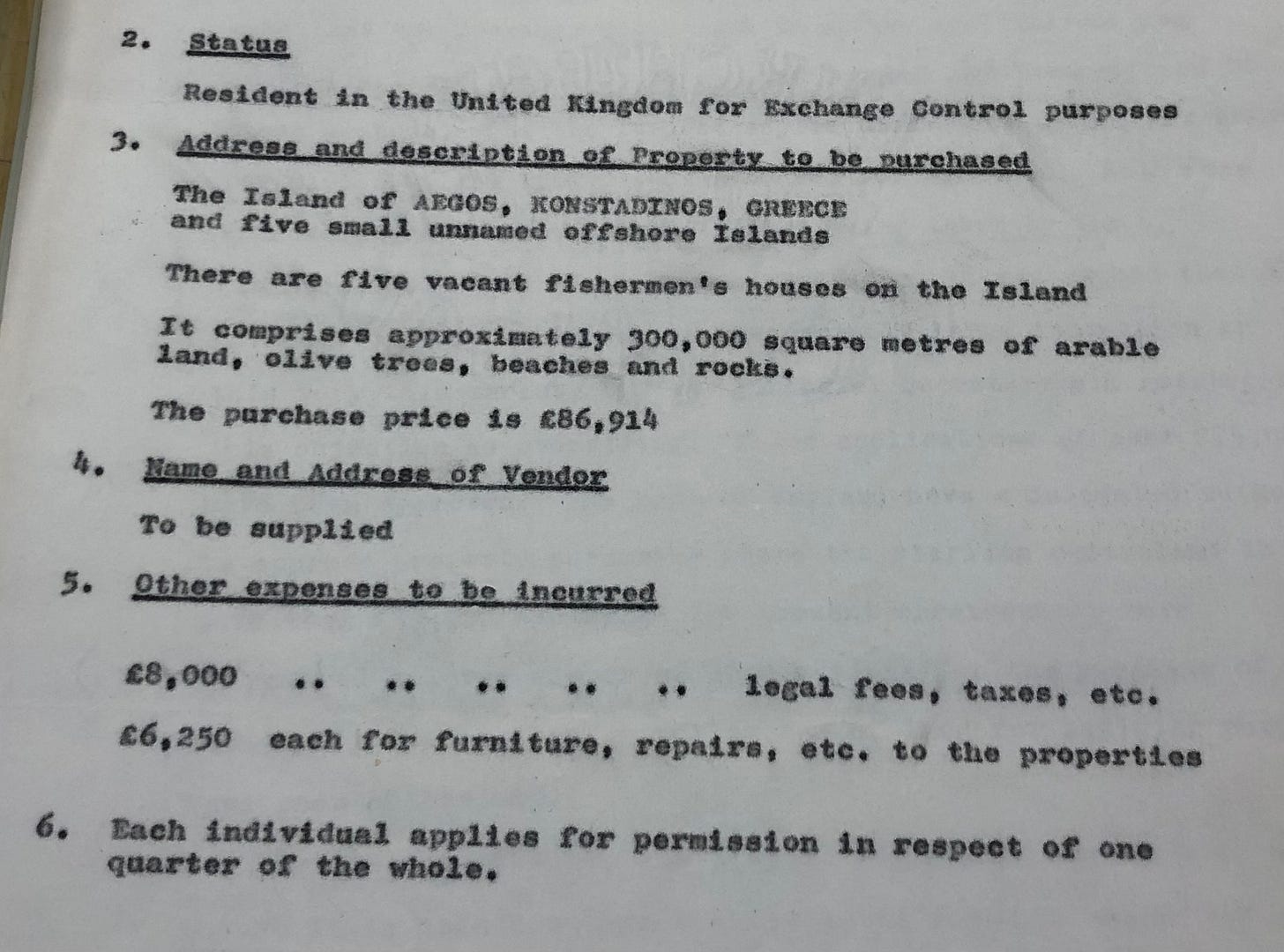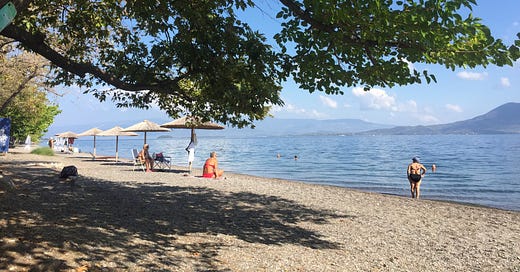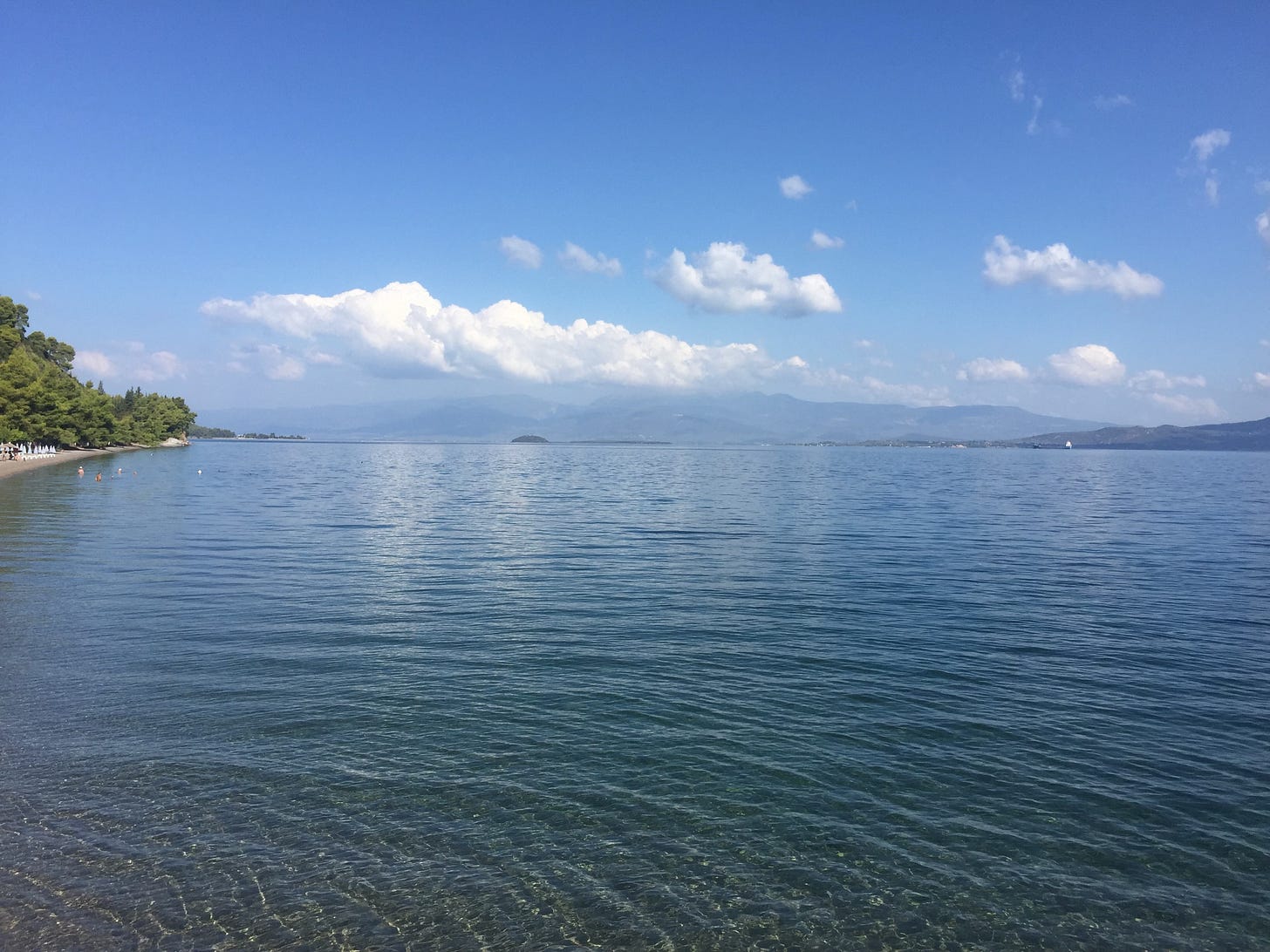Mistake or misdirection? The ‘Aegos in Konstadinos’ mystery
The supposed name for the island the Beatles wanted doesn't seem to actually exist - but it's very similar to the name of a real place, that was close to islands they visited.
There’s an intriguing moment in The Beatles Anthology docuseries, where Ringo Starr recalls the group using decoy cars to throw the crowds off their scent on their US tour of 1964.
“I loved it,” he says. “I loved all the decoy cars and all these intricate ways of getting us to the gigs.”
As I write about in more detail below, it was fairly common for various forms of benign subterfuge to be used as a way of dealing with the attention that came with the Beatles’ huge fame – helping them maintain some semblance of privacy and security. On another occasion, Ringo compared such tactics to being “like the bloody Secret Service”. But what relevance does this have for the group’s plans to buy a Greek island?
The fact that sometimes the people around the Beatles disguised, or directed people away from, aspects of the group’s lives came to mind after I spoke to Obadiah Jones about my research for his podcast, ‘Gimme Some Truth’ (you can listen to the episode on the Beatles’ Greece trip here).
As we discussed, one element of the Beatles’ Greek adventure remains particularly puzzling. In accounts of the events, not one, but two specific names are given for the island they wanted – neither of which are the names of actual Greek islands. Here I’ll focus on the name provided in the National Archives documents concerning the events, which state that the island’s name is “Aegos in Konstadinos”, or “Aegos, Konstadinos, Greece”.

As is also the case for the other supposed name, “Leslo”, there is no Greek island called Aegos in Konstadinos. However, there is a real location, Agios Konstantinos, with a very similar name – and which also happens to be very close to the route the Beatles took. Agios Konstantinos is a port on the Greek mainland, in the Gulf of Evia which the Beatles sailed up on the yacht. It’s close to all of the islands linked with the group. Ferries depart from there to Skiathos (next to Tsougria) to this day, and it’s particularly near the Lichadonisia, which (as I realised when I visited in 2020), you can see the from the town’s beach.
And the two names really are extremely similar. In Greek, the difference between ‘Aegos’ and ‘Agios’ is just one letter in a different place (Αíγος/Áγιος). Αnd since there is no letter representing the hard ‘d’ sound, this is usually written with the Greek letters for ‘nt’ (ντ). So in Greek, the second parts of the names are effectively identical (Κωνσταντíνος).
In other words, it’s very possible that the non-existent island name “Aegos, Konstadinos” emerged as a slightly distorted form of the name, Agios Konstantinos – which is a real place. It’s not an island, but it’s close to islands the Beatles were contemplating buying.
Mistake or misdirection?
If so, how did this distortion happen? It’s certainly possible that there could have been a mistake, where the name of the island was somehow confused with a nearby port. It’s plausible that someone connected with the events passed through Agios Konstantinos at some point (for example, Alexis Mardas or Alistair Taylor). And perhaps someone later couldn’t quite remember the name accurately, or made an error transliterating it from Greek. Given the many people involved with the plans (including a distinguished law firm), it would perhaps seem surprising if no one thought to check the actual name of the island before making the application to the government – but such things do happen.
In my opinion, there is also an alternative possible explanation. And this is associated with the clear record of people working for the Beatles using misdirection to avoid unwanted attention. The “decoy cars” mentioned by Ringo were real things, as André Millard writes in his 2012 book, Beatlemania:
“By necessity the security arrangements for their concert tours were as meticulously planned as military operations, involving elaborate ruses like decoys and deliberately misleading the waiting press corps… They travelled in police cars, ambulances, armored cars and even fish trucks to avoid the mob. They exchanged clothes with policemen to dupe the waiting throngs and often disguised themselves if they had the nerve to leave the hotel and walk outside.”
People who were close to the Beatles on tour recall such tactics being used. Comparable subterfuge was also sometimes used by those buying property on behalf of the group. Alistair Taylor, for example, tells us that he would typically deal with estate agents “under my own name, because the prices would rise astronomically if they knew I that I am acting for the Beatles”. He bought the island of Dorinish in Ireland for John Lennon in this way – claiming to be a “London entrepreneur”. Similarly, from the Beatles’ former accountant Harry Pinsker (who I spoke to in 2015), I learned that he posed as the buyer of Ringo’s ‘Sunny Heights’ house in Weybridge in 1965 on behalf of the Beatle in similar circumstances, before the name was switched on the contract.
The situation with the Greek island isn’t directly analogous to any of these situations. But these stories, and other accounts, make clear that the Beatles’ associates would sometimes use such strategies to help deal with the consequences of the group’s fame. So in my view, it’s far from implausible that similar sleight of hand was used with the Greek island, too – possibly to help deter media interest. (The documents containing the name “Aegos” weren’t public, but there could have been concern about the information leaking out.) Remember, part of the motivation for the group getting a Greek island was for respite from the crowds. And when visiting Greece, despite apparently being “used…as propaganda”, the Beatles seem to have been highly sensitive about attention from the public and the media, and were apparently keen to avoid this.
So, the seemingly inaccurate name “Aegos” appearing in the documents about the island could certainly have been a mistake. But there’s also the possibility that it was added more deliberately and knowingly.
The application letter
Or perhaps it was some strange combination of both – a possibility which becomes clearer if we look at the timing of the events. The letter from the Beatles’ lawyers, Goodman Derrick, applying for the required currency permission and containing the name “Aegos in Konstadinos”, is dated 25 July. If accurate, that means it was written while the Beatles were in Greece, but before they had visited any of the islands in question (it was the day the yacht left Athens).
We are also told (in a Greek newspaper report) that Alistair Taylor departed Greece on 27 July – the day after the Beatles visited the Lichadonisia islands, quite possibly to progress the purchase. And we know that of the various islands the Beatles were considering, the description in the application document is closest to the Lichadonisia. And this “paradise” archipelago also seems to have been identified in advance as the favoured location. So, the letter appears to have been written at a time when:
The Beatles didn’t know for sure which island they wanted, and hadn’t visited any of them yet
But there was a clear front-runner that had been identified (the Lichadonisia)
And, all the islands under consideration were fairly close to the port of Agios Konstantinos (in the case of the Lichadonisia, very close).
It seems that for some reason – possibly time pressure – the letter was drafted before the Beatles had visited any of the islands in question. (A note from a Bank of England official about the application on 31 July said noted that “there is some urgency in this case as the offer may be lost in the face of considerable competition”.
In any case, the result of this situation is that the documents include an apparent description of the Lichadonisia islands – but with some details left vague, and given the name “Aegos, Konstadinos”. (As you can see in the photo above, the size of the island itself isn’t stated, and the name and address of its vendor are “to be supplied”).
How exactly this came to be, we don’t know. But whether by accident or design, it’s actually quite a good solution to the uncertainty of the situation. Though the name provided is ultimately inaccurate, it’s accurate enough to avoid any major difficulties. And whether or not it was a mistake, it could be plausibly passed off as one – with the added bonus of helping to maintain privacy.
Perhaps, like the decoy cars and the disguises, the supposed island name “Aegos in Konstadinos” involved deliberate sleight of hand in some way. Perhaps it was a convenient placeholder. Perhaps it was just a mistake. Or perhaps it was none of these – or all three.






I'm pretty sure Paul refers to the island in question as Leslos as well in Many Years from Now.
And yes, a very good observation about the subterfuge. There is so much of it that it has distorted the history to the point of absurdity in many places, even beyond the Greek trip. Thank you for doing so much to sort out this part of the story.